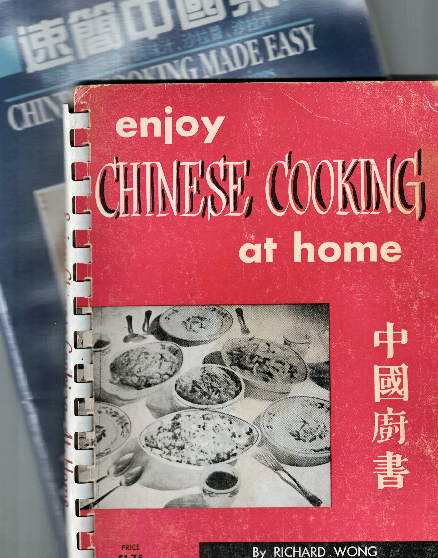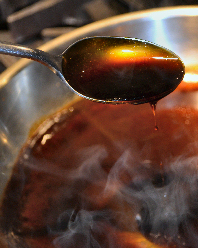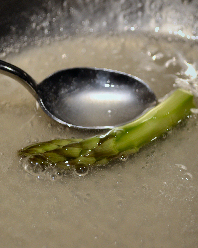 Homepage
Sitemap
Site Search
Homepage
Sitemap
Site Search

My friend Tony owned a very good authentic Mandarin and Szechuanese restaurant. He allowed me into his kitchen a few times to experience the fast pace of orders coming in and going out. Being a western chef I should have been in awe but because I actually experienced Chinese chefs cooking in China, I wasn't. American and European kitchens all have the same rush during meal hours. And we all need to be prepared to cook, do our prep work---a/k/a mise en place---prior to cooking. The preparation ahead of time is when the meats are butchered, fish is fileted, vegetables cut and sauces prepared.
In Tony's case he wasn't the chef; he had a full staff that filled those responsibilities. Tony however was the sauce master and taught by his father-in-law, the master chef of the restaurant. Every morning before his staff arrived he made the sauces, just as his father-in-law taught him to do. Tony said, "The sauces are the key to consistency, when I make them they are the same every day. There isn't the inherent urge that chefs have to change or doctor them to their liking or to what they learned at other restaurants. My father-in-law was a Chinese Master Chef who took great pride in making food taste as authentic to Chinese culinary standards as possible. In French cooking, Italian, German and other cuisines they do the same, Chicken Cordon Bleu can only be made one way, the same goes for Pesto. Sauerbraten is Sauerbraten, there are no recipe variations period and certainly no such thing as Sweet Potato Gazpacho!"
I swear that Tony's dishes were right on and they didn't vary over the many decades he was in business. If his chef cooked a dish, I cooked the same one, and Tony cooked yet another, we wouldn't know whose was whose. All three should look and taste exactly the same. As Tony said, "If you have the same consistent sauce anyone who has some cooking skills can turn out excellent and authentic Chinese dishes!"
On one of my kitchen visits, there were five cases of whole chicken packed in crushed ice in the meat cutting room. See that, Tony said, this is only for today! Chefs will cut it and make stock from the bones, and it will be used for our white sauce and our soups. We do this every day and when it is really busy, we might have seven or eight cases. Then there is the beef, lamb, fish and seafood to process in the same manner. We always use the trimmings in some way for our sauces. I know it is the old way of cooking, that's the way my father-in-law set up the kitchen.
Two basic sauces are the brown sauce and white sauce. Brown sauce is
mainly for meat dishes; beef, lamb, duck, yet he also used it in his Chendu
Fish dish, to bind together moo shu and one of his tofu dishes. The white
sauce was for fish and seafood, chicken and vegetable dishes. Other
ingredients such as black beans, chili with garlic, preserved vegetable,
ginger and garlic were added as items cooked and then his sauces were added,
seconds before service to bind everything into a flavorful dish. If
Tony had a secret, he didn't add a lot either, literally an ounce or two.
His style of cooking was mostly dry and nicely coated, not swimming in
sauce. For this he earned great reviews of quality and consistency.
There were also base sauce reductions for General Gao's Chicken, another for Twice Cooked Pork and Black Bean paste for Shredded Pork with Black Bean Sauce. They were prepared in smaller quantities to keep them fresh. For the Shredded Pork, it was marinated in cornstarch, vegetable oil, a pinch of baking soda, garlic and Shao Sing wine. When an order was placed, the pork was quickly stir-fried in canola oil with ginger, green peppers and scallions for a minute and then a small amount of black bean paste along with the brown sauce was added. It was cooked 15 seconds more to meld the flavors…on to a plate and out to the customer it went---steaming hot and fragrant. For other dishes it was a similar routine with the exception of a few dishes like beef and broccoli or chicken with asparagus. Here the meats were also marinated and stir-fried with white sauce for the chicken and the brown sauce for the beef…so simple and yet so delicious! The same was said for his Deep Fried Tofu in Brown Sauce although that was finished with fresh chopped cilantro and toasted sesame seeds.
Tony never shared the exact recipe with me, but I was there one day to see him put it all together. He added a few bottles of dark and light soy, Shao Hsing wine, garlic, scallions, a split ginger root, white pepper and oil to a 60 quart stock pot, along with stock, as the cooking process began. He made 5 gallons just for that day. Tony made fresh sauces every day!
Through taste memory and my knowledge of Chinese cooking I was able to duplicate Tony's Brown and White base sauces and they are listed below. The procedures are the same, it's just the ingredients that are different. You too can be on the road to preparing dishes like a Chinese Chef!

